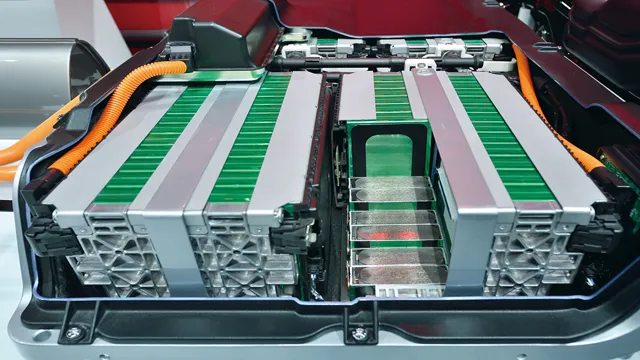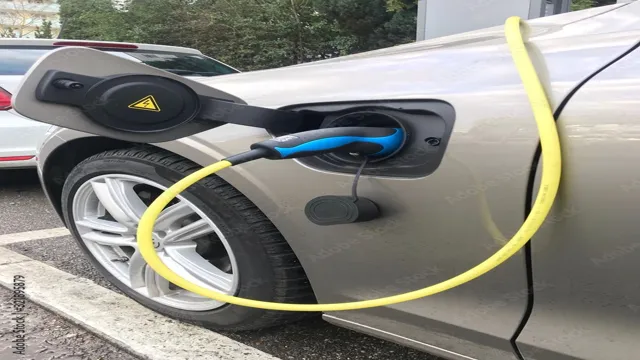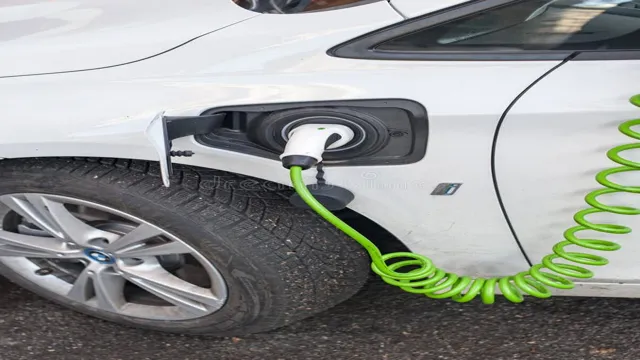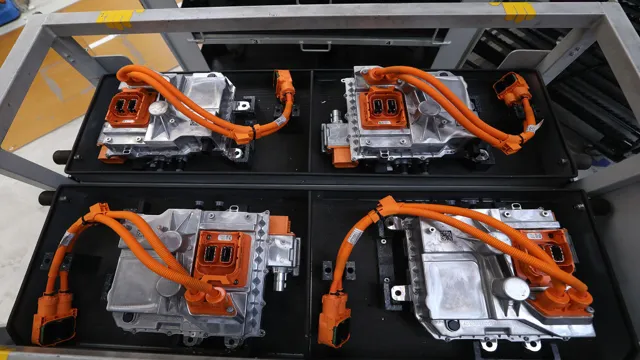Power Up Your Ride: A Comprehensive Guide to Understanding Car Battery Electrical Systems
Getting stuck with a dead car battery can be an absolute nightmare, and it always seems to happen at the most inconvenient times. But have you ever taken the time to understand how your car’s electrical system works and why your battery is so important? Understanding the basics of car battery electrical systems can help you prevent breakdowns and even extend the life of your battery. In this blog, we’ll explore the ins and outs of car batteries, how they work, and some tips to keep them running smoothly.
So buckle up and let’s dig into the world of car battery electrical systems!
What is a car battery electrical system?
The car battery electrical system is an extremely important component of any vehicle. It serves to power the various electrical systems that are present in today’s modern cars. The battery itself is responsible for storing and providing electrical energy to the starter motor, which in turn helps to start the engine.
It also provides power to the ignition system, the lights, and other electrical components. The battery electrical system consists of several key components, including the battery, the alternator, the starter motor, and various cables and connectors. The battery is the heart of the system, providing the initial jolt of electricity needed to start the engine.
The alternator is responsible for recharging the battery and providing power to the various electrical systems when the engine is running. Overall, the car battery electrical system is an integral part of any vehicle and a crucial component to ensure the proper functioning of your car. If any of the components of the system fail, it can result in a variety of problems from a dead battery to a car that won’t start.
It’s important to keep this system in good working order and to have it inspected regularly to ensure optimal performance.
Understanding the components
A car battery electrical system is a vital component of any automobile that is responsible for starting the engine and powering its various electrical systems. It consists of several different parts, including the battery itself, which stores the electrical energy needed to power the car, the alternator, which recharges the battery while the car is running, and the starter, which uses the battery’s energy to turn the engine over. The battery is crucial to the function of the electrical system, as it provides the initial spark needed to start the engine.
Without a functioning battery, the car’s electrical systems, such as its lights and radio, may not work properly. When considering the car battery electrical system, it’s essential to understand the importance of each component and how they all work together to ensure the reliable functioning of the vehicle. The battery serves as the heart of the system, providing the power necessary to start the engine and keep the car’s electrical systems running.
The alternator acts as a generator, recharging the battery while the car is in operation and providing a continuous flow of power to the vehicle’s systems. Finally, the starter utilizes the battery’s energy to turn the engine over, kickstarting the car into motion. In conclusion, a well-functioning car battery electrical system is essential for the reliable operation of any automobile.
By understanding the significance of each component and how they work together, car owners can better maintain and care for their vehicles, ensuring that they remain safe and dependable on the road. So make sure to keep your car battery and its associated parts in good condition to avoid any unexpected surprises when hitting the road.

Importance of maintaining a healthy battery system
Maintaining a healthy car battery electrical system is crucial for the performance of your vehicle. The battery electrical system includes various components, such as the battery, alternator, starter, and wiring, that work together to start the engine, power the lights, and run other necessary systems in the car. If any of these components fail or are not properly maintained, it can result in various problems such as difficulty starting the car, poor fuel efficiency, and even total system failure.
It’s important to regularly check the battery and other components to ensure they are working efficiently. You can also take steps to prolong the life of the battery, like minimizing short trips and excessive idling, keeping the terminals clean, and avoiding overcharging. With proper care and maintenance, you can enjoy a reliable and smooth driving experience without any unexpected car troubles.
Remember, prevention is better than cure, and this holds true for your car battery electrical system too!
Signs of a failing car battery electrical system
Your car’s battery is responsible for the electrical system that powers everything from your engine to your headlights. Without it, your car won’t start. So, it’s important to recognize the signs of a failing car battery electrical system.
One common sign is difficulty starting the car, especially in cold weather. Another sign is dimming or flickering headlights. If you notice that your car’s dashboard lights are dim or flickering, it could be a sign that your battery is failing.
Additionally, if you hear clicking noises when you turn the key, your battery may not be generating enough power to turn the engine over. Finally, if you notice a strong, sulfuric smell coming from under the hood of your car, it could mean that your battery is leaking. If you notice any of these signs, it’s important to have your car’s battery and electrical system checked by a professional mechanic to keep your car running smoothly.
Dimming headlights
As a car owner, one of the most frustrating things that can happen is experiencing dimming headlights. It’s a sure sign that there is something wrong with your car battery electrical system. There could be several reasons why this is happening.
One possibility is that the alternator is failing. When the alternator is not working correctly, the battery is not receiving enough charge, which causes the headlights to dim. Another reason could be that the battery is simply old and in need of replacement.
In either case, it’s essential to get your car checked out by a qualified mechanic who can diagnose the issue and provide a fix. This problem should not be ignored as it can lead to more serious issues down the road. So, if you notice that your headlights are dimming or flickering, don’t hesitate to take your car in for a checkup.
Your safety on the road is essential, and ensuring that your car is functioning correctly is an integral part of that equation.
Unusual noises from the engine
“car battery electrical system” Have you ever heard unusual noises coming from your engine? This could be a sign that your car battery electrical system is failing. Flickering headlights, dim interior lights, and a slow crank when starting your car are all indications that it’s time to have your battery checked. When your battery is unable to hold a charge, it can cause your alternator to work harder, which can result in unusual noises such as squealing or whining.
This could potentially cause damage to other parts of your engine. It’s important to have your battery checked regularly to ensure that it’s functioning correctly and to avoid potential breakdowns. A failing battery can also lead to other electrical issues such as a malfunctioning starter motor or alternator.
Don’t neglect the warning signs, and make sure to take care of your car battery electrical system to avoid any unwanted surprises on the road.
Slow cranking or failure to start
If your car’s engine is slow to crank or fails to start altogether, it could be a sign of a failing car battery or electrical system. One indicator is if your headlights are dim when you turn the ignition key, or your horn sounds weak when you press it. Another symptom is if your dashboard lights flicker or go out completely.
These are all warning signs that something may be wrong with your car’s electrical system. It’s important to have it checked out by a professional mechanic as soon as possible to avoid being stranded on the side of the road with a dead battery. If your battery is more than three years old, it’s probably time to have it replaced anyway, as the average lifespan of a car battery is around that mark.
Don’t ignore the warning signs and wait until you have a major problem before getting your car serviced. It could save you time, money, and a whole lot of frustration in the long run.
Tips for maintaining a healthy car battery electrical system
Maintaining a healthy car battery electrical system is essential for keeping your vehicle running smoothly. One of the best tips for maintaining your car battery is to keep it clean and free of debris. Dirt and grime can build up on the battery terminals and cause electrical issues, which can lead to battery failure.
Regularly checking the voltage of the battery and ensuring that it’s in the correct range is also important. Overcharging or undercharging the battery can cause damage and shorten its lifespan. If you notice any issues with your car battery, such as slow engine cranking or flickering lights, it’s important to have it checked by a professional mechanic.
Additionally, avoid leaving electronics plugged in while the car is turned off, as this can drain the battery. By following these tips, you can prolong the life of your car battery and avoid unexpected breakdowns.
Ensure proper installation
One of the most critical aspects of maintaining a healthy car battery electrical system is ensuring proper installation. This means that the battery terminals should be clean and free from any corrosion that could interfere with the battery’s ability to maintain a charge. It’s also essential to ensure that the battery is securely mounted and that the cables are tightly connected to prevent any loose connections.
A poorly installed battery can not only cause starting problems but also potentially damage other components in the electrical system. By taking the time to ensure proper installation, you can help extend the life of your battery and keep your car running smoothly. So, the next time you replace your car battery, make sure to follow the manufacturer’s instructions carefully and take the extra time to ensure that it’s installed correctly.
Regularly inspect and clean battery terminals
Maintaining a healthy car battery is essential for ensuring a smooth driving experience and avoiding roadside breakdowns. One crucial step to keeping your car battery in top condition is regularly inspecting and cleaning the battery terminals. Over time, corrosion can build up on the terminals, causing poor electrical connection and reducing the battery’s ability to charge and power the car.
Cleaning the terminals is relatively easy and can be done with a mixture of baking soda and water. Using a wire brush or an old toothbrush, scrub away any corrosion and rinse with water. Once the terminals are clean, apply a small amount of petroleum jelly to prevent future buildup.
Maintaining a healthy car battery is critical for your car’s longevity and can save you money in the long run. By following these simple tips, you can ensure that your car battery electrical system remains in tip-top shape and always ready for the road ahead.
Replacing your car battery electrical system
If your car is having trouble starting, or you notice dimmed headlights or other electrical issues, it could be a sign that your car battery electrical system needs replacing. The battery electrical system is responsible for starting the vehicle’s engine and powering its electrical systems. Over time, the battery can become worn out or damaged, causing electrical issues.
Replacing the system involves disconnecting the old battery, removing it from the vehicle, and connecting a new battery. It’s important to use the correct type of battery for your vehicle and to follow the manufacturer’s instructions carefully. Regular maintenance and replacement of the battery electrical system can prevent unexpected breakdowns and keep your vehicle running smoothly.
If you notice any signs of electrical problems, it’s best to have it checked by a professional mechanic to diagnose the problem and determine if a replacement is necessary.
When to replace
Replacing your car battery electrical system can be tricky, and it’s hard to know when it’s time for a replacement. There are a few signs to look out for, such as your car struggling to start, dimming headlights, or an illuminated battery warning light. If you notice any of these symptoms, it’s time to take your car to a mechanic or auto parts store to have your battery tested.
The typical lifespan of a car battery is three to five years, so even if your battery seems to be functioning correctly, it’s worth having it checked regularly to ensure it’s not on its last legs. If you end up needing a new battery, be sure to choose one that is compatible with your vehicle’s electrical system and meets its needs. Investing in a quality battery will save you time, money, and frustration in the long run.
How to choose the right replacement battery
When it comes to replacing your car battery, it’s important to choose the right one for your specific electrical system. One key factor to consider is the size and voltage of the battery, as this can affect the performance and longevity of your vehicle. It’s also important to choose a reputable brand and ensure that the replacement battery is compatible with your particular make and model.
It’s often helpful to consult with a professional or refer to your owner’s manual for guidance. Additionally, investing in a high-quality battery charger or maintainer can help prolong the life of your new battery and prevent any potential issues down the road. By taking the time to carefully select the right replacement battery, you’ll ensure optimal performance for your vehicle and avoid any unwanted surprises.
Conclusion
In conclusion, the car battery electrical system is the true life force behind our beloved vehicles. It’s the power source that keeps us cruising down the road with the windows down and the radio blasting. Like the heart of a person, the car battery electrical system keeps everything running smoothly, from the headlights to the air conditioning, and every electrical component in between.
So, the next time you jump into your car and feel the ignition fire up, take a moment to appreciate the true power of the car battery electrical system. It’s truly the spark that ignites our driving passions and keeps us moving forward. Just remember, without it, we’d all be stuck in neutral.
“
FAQs
How do I know if my car battery needs to be replaced?
Signs that your car battery may need to be replaced include difficulty starting the engine, dimming headlights, and electrical components not functioning properly.
Can a bad car battery affect other parts of my vehicle’s electrical system?
Yes, a bad car battery can cause strain on other parts of the electrical system, leading to issues with the alternator, starter motor, and fuses.
How long does a car battery typically last?
The lifespan of a car battery can vary depending on a number of factors, including driving habits, climate conditions, and battery type. On average, a car battery may last between 3-5 years.
Can I replace my car battery on my own or should I take it to a professional?
While it is possible to replace a car battery on your own, it is recommended to have a professional do so, as they have the necessary tools and expertise to ensure it is done safely and correctly. Additionally, improper installation could cause damage to other parts of the electrical system.





